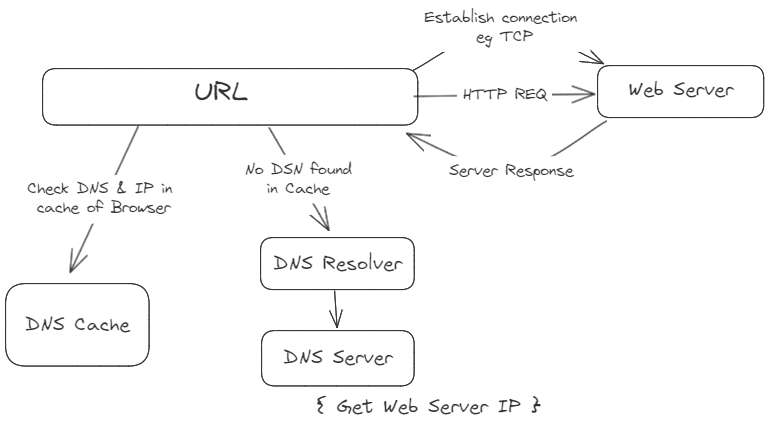How the Web Works: Unraveling the Mystery
 Himanshu Bhoir
Himanshu BhoirHave you ever wondered what happens behind the scenes when you visit a website? It’s like magic, but there’s actually a lot of simple technology making it happen.
Broadband: The Global Connection
The internet connects everything through a network of wires that span the globe, allowing us to send and receive information at lightning speed. This connection is what we call broadband. It’s the backbone of the internet, linking homes, businesses, and data centers together.Domain Name: The Web’s Address Book
Every website has a name, known as a domain name, likewww.example.com. Think of it as the web’s address book. When you type a domain name into your browser, it acts as the name tag for a specific website.IP Address: The Internet’s GPS
Behind every domain name is an IP address, a string of numbers that uniquely identifies a computer on the internet. Just like how your home address tells the postal service where to deliver your mail, an IP address tells the internet where to send your request.Routers: The Traffic Directors
The wires connecting the internet are controlled by routers. These devices act like traffic directors, helping to divide the IP addresses into manageable chunks. When you search for a website, routers help guide your request to the exact IP server that holds the information you’re looking for.
How It All Comes Together
When you enter a URL in your browser, here's a simplified version of what happens:
DNS Lookup:
The first step is finding the IP address of the website you're trying to reach. Your browser checks its DNS cache to see if it already knows the IP address. If not, it asks a DNS resolver to get the IP from a DNS server.Connecting to the Web Server:
Once the IP address is found, your browser establishes a connection to the web server. This usually involves setting up a TCP connection.Sending an HTTP Request:
Your browser sends an HTTP request to the web server, asking for the specific webpage or resource.Getting a Response:
The web server processes the request and sends back the response, which your browser displays as the webpage you wanted to visit.
Diagram Overview: Refer to the diagram below to visualize this process:

This diagram shows how a URL request flows through DNS lookup, connects to the web server, and returns the desired webpage.
Subscribe to my newsletter
Read articles from Himanshu Bhoir directly inside your inbox. Subscribe to the newsletter, and don't miss out.
Written by

Himanshu Bhoir
Himanshu Bhoir
Obsessed with Web Development | Full-Stack Specialist in React, Node.js, and Spring Boot | Top 5% LeetCode Programmer